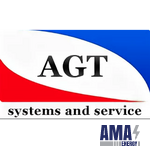Res3Dinv
For Windows 3.1, 95, and NT
In those places where the structure of geological structures can be approximately estimated as two-dimensional, conventional studies have been successfully used to build a 2-dimensional image of the environment. The main drawback of such studies is the assumption of 2-dimensionality of the geological environment. In places with a complex structure, there is no other way out than 3-dimensional studies. This program is designed to invert the data obtained during the survey type E-SCAN (Li and Oldenburg 1992), when the electrodes are placed in the nodes of a rectangular grid. Most often, for conducting 3D studies, two-electrode, three-electrode, and dipole installations are used. Electrode installations of a different type probably do not provide horizontal coverage that would be sufficient to completely map the area of interest.
To create a 3-dimensional model of the geological environment based on data on apparent resistivities, the least-squares inversion method with smoothing restriction was used in the RES3DINV program. This process is performed in a fully automatic mode, and the user is not even required to provide an initial model. The program is optimized for inverting large amounts of data. Free memory is used in such a way as to reduce the time of the computer, by minimizing the exchange with the disk. It is recommended to use a microcomputer based on a Pentium Pro or Pentium II processor, with RAM with a capacity of at least 64 MB, and a hard disk with a capacity of at least 3.2 GB.
Depending on the size of the observation grid and the number of field measurements, as well as the speed of the computer used, the inversion of one array of 3D data can take from several minutes to more than 12 hours! In addition, with the help of this program, relief corrections can be introduced using a nonlinear finite element grid whose surface coincides with the relief.
The program automatically selects the optimal inversion parameters for a specific data array. However, those parameters that affect the inversion process can be adjusted by the user. Three different least squares options are available; a very fast quasi-Newton method, a slower but more accurate Gauss-Newton method, and a relatively fast hybrid technique that combined the advantages of the quasi-Newton method and the Gauss-Newton method. There are two different versions of the least squares method with a smoothing restriction, one of them is optimized to reduce the difference between the calculated and measured values of the apparent resistivity, and the second guarantees the creation of a model with smoothed deviations of the resistivity value, even when processing arrays of noisy data.
The results obtained when performing studies to construct an image of the environment using electrical or electromagnetic methods on a site with a complex geological structure are shown in the example in Figure 1. This study was conducted in southern Sweden, in Lernacken, over a closed sedimentation deposit (Dahlin and Bernstone 1997). Resistance electrical exploration was carried out using a grid consisting of 21 x 17 electrodes with a distance of 5 meters between adjacent electrodes. A two-electrode setup was used. Old sludge collectors containing highly contaminated groundwater in the upper two layers proved to be zones with low resistivity. This was confirmed by chemical analysis of the samples. The low resistivity of individual sections in the two lower layers is explained by the presence of salt water coming from the nearby sea.
Since the RES3DINV program runs on the Windows operating system, all graphics cards and printers with the Windows driver are automatically supported. The program was tested for graphics modes with a maximum resolution of 1600 x 1200 pixels with 256 colors.

